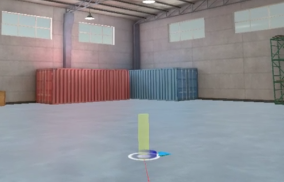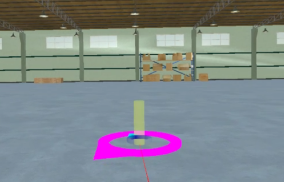Walking Locomotion
There are three different ways to have walking be the method of transportation for users of a virtual environment. The first is normal walking in which the user walks around a physical space and that motion is translated into the virtual environment. Secondly the user can walk and turn in place. Lastly, the user can simply swing their arms, known as arm-swinging, as they would while walking.

Best Practices
If the physical space is available, normal walking provides the most realistic experience for users [Ruddle and Lessels 2006; Waller and Hodgson 2013].
When the physical space is not available, walking in place provides the users a better sense of the environment than arm-swinging does [VR Locomotion].
Example Applications of Best Practices
Links
- For Efficient Navigational Search, Humans Require Full Physical Movement, but Not a Rich Visual Scene (Ruddle and Lessels 2006)
- Sensory Contributions to Spatial Knowledge of Real and Virtual Environments (Waller and Hodgson 2013)
- VR Locomotion
This page is a work in progress. If you have or know of any research papers that can be used to fill this page please consider submitting it.


